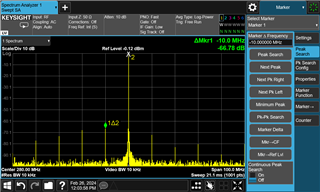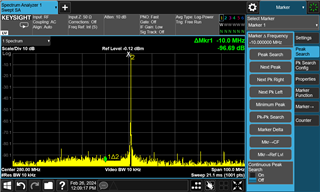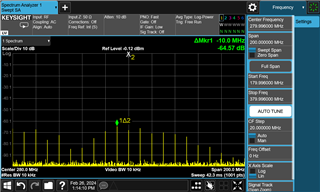Other Parts Discussed in Thread: , LMX2572LP
I need some advice regarding the LMX2581.
Fosc: 10MHz, Fout: 280MHz, Fpd: 10MHz.
As a result of actual measurement, spurious at intervals of 10 MHz is observed at 280 MHz.
This spurious is probably caused by Fosc or Fpd.
Is there a good way to improve it?
Regards,
Akihiko Yokouchi


R15 0x021FE93F
R13 0x4081410D
R10 0x210050CA
R9 0x03C7C039
R8 0x207DDBF8
R7 0x00062117
R6 0x000004C6
R5 0x0010E805
R4 0x00000004
R3 0x200CA1A3
R2 0x0C003E82
R1 0xFA003011
R0 0x60E00000


 fig1
fig1 fig3
fig3 fig4
fig4 fig5
fig5